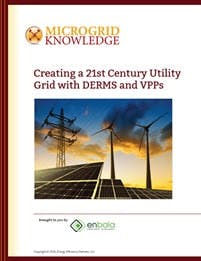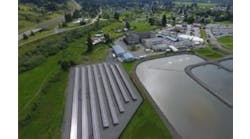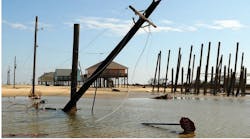In the previous installment of the Microgrid Knowledge Special Report series focused on distributed energy management systems (DERMS) and virtual power plants (VPPs), we covered how DERMS and smart inverters can bring distributed resources onto the grid. In the fifth installment, we explore how technology and updates in utility rules and regulations will pave the way for efficient DER orchestration.
Download the full report.
The impact of distributed energy resources, or DERs, on the electric grid is real and growing, fueled by two converging factors. Forward thinking utilities are seeking to leverage DERs to better meet their grid balancing needs and also to generate new sources of revenue. And consumers and businesses want to save money, exercise greater control over their energy use and minimize their carbon impact.
The desire and need for DERs are well-documented; the challenge is how utilities, vendors and regulators can best deal with the shift from relying on centralized power plants to including a healthy mix of distributed resources.
“Wire operators and utilities are faced with the problem of how to bring renewable energy and other DERs into the existing power grid, and manage these resources so they support the grid, rather than burden it,” says Eric Young, vice president, industry solutions for Enbala.
Technology has far outpaced utility rules and regulations
Modern VPPs and DERMS provide the control and management technology needed to seamlessly integrate distributed energy assets into the existing grid.
But in order for DERs to truly meet their potential in modern energy markets and the changing economics of electricity, regulatory and market obstacles need to be overcome. These stand in the way of utilities looking to maximize their DER investments. While DERMS and VPPs can efficiently manage the increasing amount of distributed energy online, these barriers prevent VPPs and DERMS from being optimally used by utilities and wire operators.
Current rules and regulations reflect the central power plant model of the last century’s grid. These rules and regulations were set up for utility management of centralized power plants — rather than distributed resources — and reflect the technology of the 1960s to 1990s, not current capabilities.
Operating the distribution grid under these outdated regulations is like being forced to use a cassette tape in a Walkman to listen to your favorite music when digital technology can now instantly stream your personalized playlist to your smart phone, on demand. Regulators and policymakers must change current rules and regulations to fit the new technologies. Here are some examples of current regulations that are in need of reform:
DER interconnection standards: IEEE 1547 defines DER interconnection standards. It’s out-of-date and currently undergoing reform, but most states have not adopted any modernized/ revised standards. This prevents smart inverters from being deployed at scale and used for voltage/ frequency support. In fact, most states require inverters to “autonomously disconnect” in the event of voltage or frequency excursions. When a large number of DERs suddenly go offline at the same time, it further deteriorates grid operations.
Battery safety regulations: Battery safety regulations can add significant delays and expenses for stationary storage projects. This is particularly true for lithium-ion energy storage projects in New York City, where there are extensive water and ventilation requirements. Every project must apply for approval by the New York Fire Department on a site-by-site basis. Consistent and repeatable guidelines are in the works — and badly needed.
Utility ratemaking regulation: Traditional utility ratemaking regulation creates incentives for utilities to build new peaker plants, for which capital expenditures can be recovered through rates. This discourages utilities from meeting resource needs through advanced DER management, even though DERs may ultimately prove less costly.
Regulation updates: On the plus side, significant advances are being made to update regulations, among them mandates that require regulated utilities to consider non-wires alternatives (NWA) to conventional infrastructure. Leaders in promoting NWAs include New York and California.
Plug-in electric cars, rooftop solar systems and battery storage are often sitting idle when they could be earning money serving the needs of the grid.
Opportunities to take advantage of underutilized energy resources
“Utilities and grid operators have many opportunities to become network orchestrators and take advantage of distributed energy resources that might otherwise be wasted,” says Young.
Plug-in electric cars, rooftop solar systems and battery storage are often sitting idle when they could be earning money serving the needs of the grid.
However, once again, policy stands in the way. For example, while behind-the-meter assets in a home can be controlled, few markets compensate the residential utility customer for providing demand response. Therefore, these assets remain under-utilized.
Taking advantage of capacity markets
Additional opportunities exist for utilities to utilize distributed assets in capacity markets. Leveraging VPPs and DERMS, utilities and grid operators can exercise real-time automated control over these resources and bid them into markets such as ancillary services, demand response programs and frequency regulation.
The boundaries between the regulated side of distribution and the non-regulated side of capacity markets are blurring. Ideally, the same asset could be used in both places and stay true to the regulatory model. However, current regulations do not provide a clear path for this to be accomplished. This is another example of how current rules and regulations need to be modernized so that new technical advances can be employed to their full extent.
Further, regulators in many regions don’t allow utilities to control any generation assets, including distributed generation. If utilities have capacity problems on the network, such as rapid PV penetration, they can’t manage this even though the distributed resources are connected to their systems.
Getting personal with the grid
In addition to regulatory hurdles, utilities and grid operators face some technical challenges when it comes to optimal DER utilization. On the DERMS side of the equation, where grid services are delivered by manipulating real and reactive power flows along individual feeders, effectiveness is highly dependent on the specific location and grid connection of each asset.
“This requires a fairly accurate representation of the distribution system, including reasonable latencies, and with a fair amount of transparency,” says Young.
Utilities can use a geographical information system in conjunction with a Distribution Management System (DMS) to obtain information about grid topology.
With an accurate distribution system representation, utilities can address problems quickly and effectively. For example, if a transformer is overloaded, operators shouldn’t continue to increase its load, and if it’s under loaded, operators should carefully manage higher percentages of intermittent sources as opposed to total load. By knowing the grid topology — the ways wires are built out through a neighborhood — operators know how the transformer is going to be affected by both planned and unplanned changes within in its geo-spatial regime. They can then up- or down-regulate the assets feeding that transformer and make logical decisions based on this information.
Utilities can use a geographical information system in conjunction with a Distribution Management System (DMS) to obtain information about grid topology. They can then add DERMS, which interface with these systems and function as a “brain” that optimizes and coordinates a very disparate set of distributed devices and assets.
Shifting to a renewable-friendly grid
The tools — including VPPs and DERMS — that utilities need to compete globally and shift to a more sustainable and responsible operating environment are available today. More and more utilities have the vision and commitment to adopt these new technologies. Now what’s needed to truly unlock the power of these innovative technologies are new policies and regulations that allow markets to form so that the technologies developed can be effectively utilized.
Utilities and wire operators are in an excellent position to harness these technologies and play a central role in shaping the next generation power grid. When this happens, no longer will our energy markets be restricted by technology as outdated as a Walkman.
The Microgrid Knowledge Special Report series also covers the following topics:
- The 21st Century Power Grid: Not Your Parents’ Power Grid
- Virtual Power Plants: Coming Soon to a Grid Near You
- DERMS: Next Generation Grid Management
- How DERMS and Smart Inverters Safely Bring Distributed Resources to the Grid
- Blazing the Path from Virtual Power Plants to Holistic Grid Control with DERMS (upcoming)
Download the full report, “Creating a 21st Century Utility Grid with DERMS and VPPs,” courtesy of Enbala, to learn more about how these tools and more are changing the face of the 21st century power grid.








